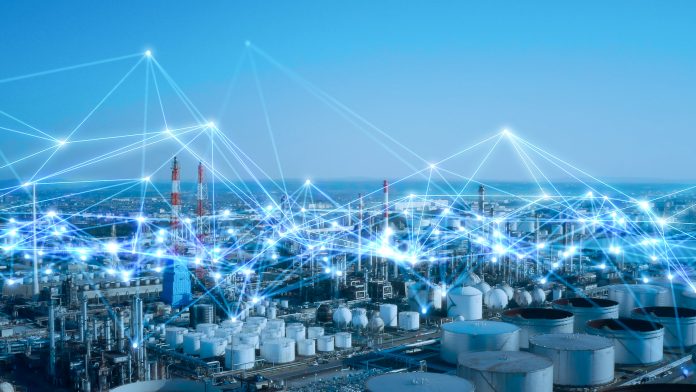Simon Tucker, Global Head of Energy, Utilities & Resources at Infosys Consulting, discusses strategies that will enable the UK to maximise its energy security and become energy independent.
Last year, the UK was hit with one of its harshest winters yet, facing an energy crisis on a scale unseen since the 1970s.
Eased by the warmer weather and governments’ increased focus on shoring up supply, the cost of wholesale oil and gas has finally started to decrease. But we’re not out of the woods yet. With winter on the horizon, the UK’s energy situation remains volatile, and things could dramatically change depending on the cold snaps over winter and the current geopolitical situation.
That’s not to say the energy sector hasn’t become more resilient. It weathered last year’s storm, and government efforts have pivoted to topping up storage reserves as much as possible to avoid a repeat of last winter. The UK energy sector is more focused than ever on planning ahead and buying supplies for future demand. However, storage can only do so much and isn’t a long-term solution.
To increase energy security, decarbonisation must lay at the heart of our long-term national strategy. Only by using cleaner energy sources, moving away from fossil fuels and putting the right infrastructure in place can energy security become a reality.
So, how can the UK maximise clean investments to ensure energy independence for the foreseeable future?
Increasing renewable connectivity
To achieve energy security, maximising the potential of renewables is key. The UK is unique in terms of having access to renewables like hydro, wind, solar, and even tidal.
Many countries don’t have this variety of green energy inputs, and the UK should be capitalising on this advantage. Such inputs make for an ideal community renewables system – a relatively cheap, plentiful, and environmentally friendly alternative.
However, community renewables require local communities up and down the country to be plugged in, which is a big challenge. Right now, the potential of green power is being missed, with new solar and wind sites waiting up to ten to 15 years to be connected because of a lack of capacity and connectivity in the system.
Currently, homes in certain regions of the UK don’t have any real options for clean energy because of these connectivity issues. It is imperative that the UK finds a way of taking the renewable energy we’re producing from more remote locations, typically in the north, to towns and cities throughout the UK.
This requires higher investment in the National Grid, which currently faces a considerable backlog to connect renewable energy projects. Without this connectivity, renewables programmes will have a stunted impact. We need more cables and storage across the country so that every region can access low-carbon electricity, putting the UK on the right path to net zero.
Demystifying the promise of mini-nuclear
Another solution lies in the potential for mini-nuclear reactors. When combined with community renewables, mini-nuclear can significantly reduce carbon emissions. These can be deployed close to population centres and are an agile and speedy alternative to massive power plant sites like Hinkley Point and Sizewell, which can take as many as fifteen years to construct.
We need to be moving to net zero at a much faster rate. Investing in initiatives like these means the government can make considerable strides to increase access to more sustainable sources.
Once mini nuclear takes off, the UK will then have the facilities to kick-start small modular reactor (SMR) initiatives – another cheaper, quicker model compared with traditional plant designs.
In the battle for energy security, lower costs are the crucial element in justifying the nuclear push and making this an energy source well-placed to work as the ideal partner alongside community renewables.
Reducing the flare-up of bad industry practices can ensure energy security
In reality, the transition to clean energy won’t happen overnight, and we’re not at a point where we can completely decarbonise the industry – with the majority of energy used in 2022 coming from coal, oil and gas (78%), there will still be a mass amount of oil and gas production while we transition to cleaner energy sources.

This transition will take time, and it is likely that fossil fuel use will continue on a considerable scale until the mid-2030s. However, whilst fossil fuels are a necessary reality for the near future, we can combat their effects by reducing waste.
Investment into oil and gas shouldn’t be written off completely, at least for now. With the right strategy, it can be used to funnel investment towards cleaning up many bad industry practices that are causing more environmental damage in the long run. For example, the flaring and spillage of oil.
Ideally, half of the capital expenditure from North Sea oil giants needs to be invested into net zero and low carbon sources of energy, as well as cleaning up bad habits, to truly make an impact whilst maintaining necessary access to energy for the nation.
When it comes to decarbonisation, the UK stands on the world stage for its unique position in renewable resources. This means we can set a global precedent, being an example to other countries and helping them set up their own solar, wind, and geothermal projects.
However, only by advancing our own systems can we be good global citizens to others. Every effort must be made to connect our renewable systems, alongside investing in mini nuclear and the clean-up of bad practices, if we are to pave the way for UK energy independence to survive the winter and the inevitable future.









